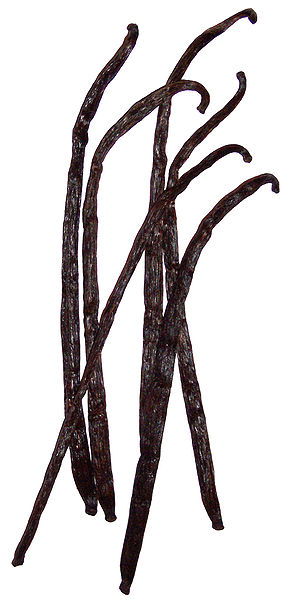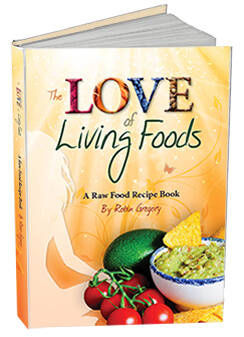Vanilla
2012

Vanilla comes from a tropical orchid, the largest family of flowering plants in the world, and is the only edible fruit of it.
There are over 150 varieties of vanilla orchids and they are grown in tropic climates. Vanilla is native to Mexico and three-fourths of the world’s supply comes from Madagascar. The main species harvested for vanilla is Vanilla planifolia. Vanilla is the second most expensive spice after saffron, due to the extensive labor required to grow the vanilla seed pods.
The most popular types are:
Mexican vanilla, made from the native V. planifolia, is produced in much less quantity.
Bourbon vanilla or Bourbon-Madagascar vanilla, is vanilla from the Indian Ocean islands, such as Madagascar, the Comoros and Reunion. It is produced from V. planifolia plants brought over from the Americas.
Tahitian vanilla is the name for vanilla from French Polynesia. It is made with the V. tahitiensis strain; genetic analysis shows that this species is possibly a cultivar from a hybrid-cross of V. planifolia and V. odorata.
West Indian vanilla is made from the V. pompona strain grown in the Caribbean, Central and South America.
Vanilla is the world’s most labor intensive agricultural crop. Many aspects of growing vanilla are very time consuming from pollinating the blossoms to harvesting the beans. It can take three years for beans to grow on it once the vine is planted. The vanilla bean, which resembles a large green bean, grows quickly on the vine but then it must remain on the vine for 9 to 10 months to mature and develop its aroma.
Each bean is picked by hand at just the right time, just as it begins to split on the end. Its commercial value is based on the length of the pod. Beans over 15 cm in length are considered a quality product, between 10 to 15 cm long they are classified as second quality and beans less than 10 cm are classified as third quality. Each of the long beans is filled with tiny seeds which are covered by a dark red thick liquid from which the vanilla essence is extracted. After harvesting, the green beans are cured for six months, during which they are rolled in blankets to “sweat”. Then they are dried on flats in the sun and then stored in a ventilated room to slowly ferment and produce their unique aroma and flavor. Between 1400 and 2300 tons of vanilla is produced worldwide each year.






